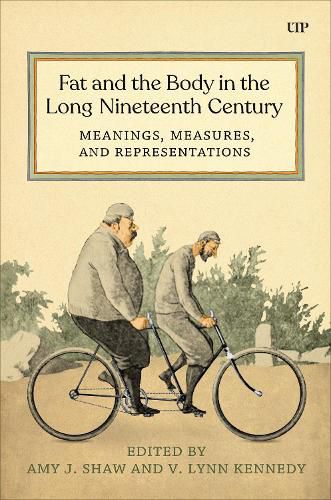Readings Newsletter
Become a Readings Member to make your shopping experience even easier.
Sign in or sign up for free!
You’re not far away from qualifying for FREE standard shipping within Australia
You’ve qualified for FREE standard shipping within Australia
The cart is loading…






In the nineteenth and early twentieth centuries, the body was a key focus of discourse. Fat and the Body in the Long Nineteenth Century animates discussion and analyses of fatness, highlighting how corporeal expectations fit into larger social systems and showing how interpretations have shifted over time. This collection examines a host of primary sources including literature, art, medical treatises, journalism, political cartoons, soldiers' letters home, and popular fiction to identify trends in how fat was perceived and promoted in the English-speaking world over the long nineteenth century.
Divided into four thematic sections, the book addresses epistemologies, artistic and literary representations, the turn towards quantification and measurement, and the connections to imperialism and colonialism. It explores the complex debate about the meaning of fat and its signalling of health, beauty, moral strength, and class status. The book shows how contemporary presentations and discussions of fat offer insights into ideals of gender and race and the processes of imperialism and of professionalization in the social sciences and medicine. By tracing how debates shifted over time, the book ultimately reveals that there was no universal interpretation of fat as a positive or negative characteristic throughout the nineteenth century.
$9.00 standard shipping within Australia
FREE standard shipping within Australia for orders over $100.00
Express & International shipping calculated at checkout
Stock availability can be subject to change without notice. We recommend calling the shop or contacting our online team to check availability of low stock items. Please see our Shopping Online page for more details.
In the nineteenth and early twentieth centuries, the body was a key focus of discourse. Fat and the Body in the Long Nineteenth Century animates discussion and analyses of fatness, highlighting how corporeal expectations fit into larger social systems and showing how interpretations have shifted over time. This collection examines a host of primary sources including literature, art, medical treatises, journalism, political cartoons, soldiers' letters home, and popular fiction to identify trends in how fat was perceived and promoted in the English-speaking world over the long nineteenth century.
Divided into four thematic sections, the book addresses epistemologies, artistic and literary representations, the turn towards quantification and measurement, and the connections to imperialism and colonialism. It explores the complex debate about the meaning of fat and its signalling of health, beauty, moral strength, and class status. The book shows how contemporary presentations and discussions of fat offer insights into ideals of gender and race and the processes of imperialism and of professionalization in the social sciences and medicine. By tracing how debates shifted over time, the book ultimately reveals that there was no universal interpretation of fat as a positive or negative characteristic throughout the nineteenth century.